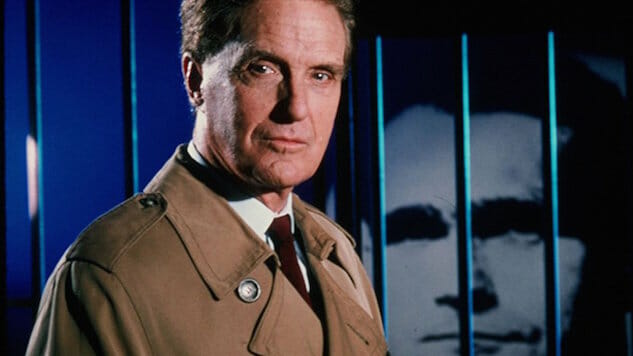Why You Should Be Thanking Unsolved Mysteries for Your Favorite Docuseries

“This program is about unsolved mysteries…”
That introductory message was followed by a Halloween-inspired theme song and the voice of host Robert Stack, a voice that would feature prominently in my nightmares for years to come. For the unfamiliar, Unsolved Mysteries is a documentary-style TV show that originated in 1987 and went through multiple hosts and networks over the course of its run. But the height of its popularity came during the Stack years, which lasted from 1987 to 2002. Each episode features three or four unsolved cases, covering a wide range of subjects: murders, kidnappings, supernatural occurrences, lost treasure, and even historical mysteries, such as the disappearance of Amelia Earhart. The producers used actual evidence, interviews with those close to the case, and some of the most mullet-heavy reenactments ever recorded to tell the story. At the end of each episode, Stack would plead with viewers to contact the authorities with information on the cases they’d just seen—and give updates on any previous cases that we, the viewers, had helped solve.
UM has been scaring the hell out of me since I was a child, and images from episodes I watched 20 years ago are still etched in my memory. One story that stayed with me was about a man who, in 1939, inexplicably picked up a woman standing in front of a cemetery and took her to a dance. Afterward, she asked him to take her home and directed him back to the cemetery, where she immediately vanished upon leaving the car. Between the ages of seven and 12, you could not convince me that each and every hitchhiker I saw wasn’t actually a ghost trying to make its way back home.
Earlier this year, when the show became available on Amazon Prime, I jumped back on the Unsolved Mysteries bandwagon, and I’ve been amazed by how much I remember from the original run. Plus, the canny distributors of UM, which is now streaming on Hulu as well, deserve extra credit for providing up-to-date news on the cases in question: I can finally sleep at night knowing what happened with that missing girl whose parents thought they saw her in a New Kids on the Block video! (Spoiler: they didn’t.)
Though true crime TV is sometimes seen as trashy or exploitative, my most recent viewing suggests that UM’s storytelling has more in common with prestige docuseries than we tend to admit. Though they stretch their examinations of a single case over the course of multiple episodes, Netflix’s Making a Murderer and The Keepers and HBO’s The Jinx still follow much the same narrative template that Unsolved Mysteries helped pioneer: Each introduces a case, the theories that might explain it, and the potential suspects, then sorts through the evidence for and against each.
In a 1988 episode of UM, for instance, which profiled the murder of Kurt Sova—a 17-year-old found dead after a neighborhood party—each person of interest had a conflicting story about that night, or mysteriously disappeared before they could even be questioned; similarly, the 1987 investigation into the disappearance of Dottie Caylor—an agoraphobic woman who vanished without a trace after rarely leaving her home in the years prior—offers as much evidence that Dottie methodically planned her escape as it does that she was murdered by her estranged husband. Likewise, The Keepers examines five potential suspects in the murder of Sister Cathy Cesnik, an instructor at Baltimore’s Archbishop Keough High School, over the course of its seven episodes, presented incriminating evidence for each. Different viewers could end the series certain that Sister Cathy was killed by an archbishop who feared she would expose him as a pedophile; or by a mysterious, unnamed man at the church; or the by boyfriend whose proposal she had rejected, or other local men with suspicious stories.
-

-

-

-

-

-

-

-

-

-

-

-

-

-

-

-

-

-

-

-

-

-

-

-

-

-

-

-

-

-

-

-

-

-

-

-

-

-

-

-








































